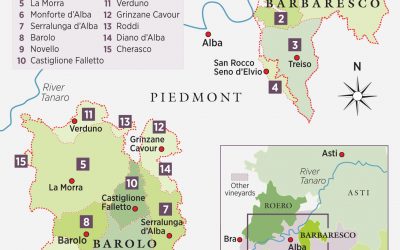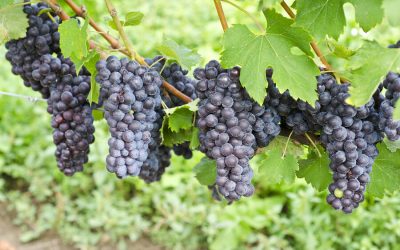What’s the difference between Barolo and Pinot Noir? Is a Barolo like a pinot noir?
In the world of red wines, Barolo and Pinot Noir hold iconic status. Hailing from different wine regions and produced from different grape varieties, they represent two unique expressions of red wine. This guide provides a thorough comparison of these two eminent wines, discussing their origins, characteristics, and optimal food pairings, to help wine enthusiasts appreciate their distinct identities and charm.
What’s the difference between Barolo and Pinot Noir?
Barolo and Pinot Noir are two distinct types of wine that originate from different regions and are made from different grape varieties. Barolo, often referred to as the ‘King of Wines’, hails from the Piedmont region of Italy and is made exclusively from the Nebbiolo grape. Known for its robust flavor profile, high tannins, and acidity, Barolo typically exhibits notes of cherries, tar, roses, and even truffles. On the other hand, Pinot Noir is a grape variety that originates from the Burgundy region of France. It presents a more delicate and subtle profile, with low tannins and high acidity. Flavors typically include red fruits like strawberries and cherries, along with floral and earthy notes.
Another important distinction between Barolo and Pinot Noir lies in their terroir – the unique environment in which the grapes are grown. Barolo’s terroir features a cool, misty climate and calcareous soils which contribute to its high tannin levels and complexity. In contrast, Burgundy, the home of Pinot Noir, has a more moderate climate and diverse soils that produce a wide range of flavors and aromas in the wine. Despite some similarities, such as their excellent aging potential, the two wines are markedly different and provide unique tasting experiences.
| Characteristics | Barolo | Pinot Noir |
|---|---|---|
| Origin | Piedmont region, Italy | Burgundy region, France |
| Grape Variety | Nebbiolo | Pinot Noir |
| Flavor Profile | Robust, with high tannins and acidity, flavors of cherries, tar, roses, and truffles | Delicate and subtle, with low tannins and high acidity, flavors of strawberries, cherries, floral and earthy notes |
| Terroir | Cool, misty climate with calcareous soils | Moderate climate with diverse soils |
| Aging Potential | Excellent, can age for decades | Excellent, especially in good vintages |
Grape Varieties and Origins: Nebbiolo meets Pinot Noir
Barolo is a wine made from the Nebbiolo grape in the Piedmont region of Italy, while Pinot Noir is a grape variety originating from the Burgundy region of France. The Nebbiolo grape gives Barolo its high tannins and acidity, while Pinot Noir is known for its delicate and subtle profile, with low tannins and high acidity.
A Tale of Terroir: Piedmont vs Burgundy
The terroir, or the natural environment where the grapes are grown, significantly influences the flavor profile of Barolo and Pinot Noir. The cool, misty climate and calcareous soils of Piedmont contribute to the high tannin levels and complexity of Barolo, while Burgundy’s diverse soils and moderate climate impart a wide range of flavors and aromas to Pinot Noir.
Flavor Profiles: Bold Barolo and Elegant Pinot Noir
The bold, complex flavors of Barolo contrast sharply with the delicate, nuanced flavors of Pinot Noir. Barolo is typically full-bodied, with flavors of cherries, tar, roses, and truffles. Pinot Noir, on the other hand, tends to be light-bodied and fruit-forward, with flavors of red fruits, like strawberries and cherries, alongside floral and earthy notes.
Aging Potential: Time is a Friend
Both Barolo and Pinot Noir have great aging potential. Barolo’s high tannin content allows it to age and evolve over many years, even decades. Pinot Noir, while usually consumed relatively young, can also develop complex flavors and characteristics over time, particularly when grown in optimum conditions.
How a MASTER SOMMELIER tells the difference between Gamay, Nebbiolo, Sangiovese and Pinot Noir

Ideal Pairings: Complementing Your Culinary Delights
Barolo’s robust flavors pair well with hearty dishes like truffles, braised beef, and aged cheeses. In contrast, Pinot Noir, with its delicate flavors and light body, pairs beautifully with dishes like salmon, roasted chicken, and mushroom-based dishes.
Is a Barolo like a Pinot Noir?
While both Barolo and Pinot Noir are revered in the world of red wines, they are markedly different. Barolo, made from the Nebbiolo grape, is renowned for its bold flavors, high tannin levels, and substantial aging potential. Its robust structure and complex flavor profile are distinct from Pinot Noir, which is typically more delicate and subtle, with low tannin levels and high acidity. Thus, despite some shared qualities, such as light body and high aging potential, Barolo and Pinot Noir offer unique and different wine experiences.
Conclusion: Appreciating the Dance of Distinction
In the end, comparing Barolo and Pinot Noir helps to illuminate the rich diversity of the wine world. Whether it’s the bold, powerful Barolo or the delicate, nuanced Pinot Noir, each offers a distinct wine-drinking experience that reflects its unique origin, grape variety, and winemaking process. By understanding these differences, wine lovers can further enhance their appreciation and enjoyment of these two outstanding wines.
Meta Description:
Dive into the intricate comparison of Barolo and Pinot Noir, two iconic red wines. Understand their origins, characteristics, and ideal food pairings. This guide offers insights into the unique identities of these wines and their place in the diverse world of wine.




